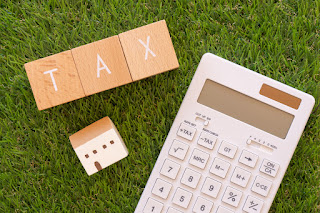What is Property Tax?
Property tax is the amount of tax that a homeowner needs to pay every year for owning that property. It is a type of ad valorem, a term derived from Latin which means 'according to value'. The tax of a property is calculated based on the assessment of the value of the property.
Local property taxes imposed on every homeowner in the locality is used to fund many public properties and service such as schools, libraries, and fire department. This tax is the major source of funding in most counties across the United States. Some property tax bills show how the funding is used and distributed and what portion of the money goes to any specific public expense.
Assessing property tax is done entirely by the local tax assessor's office upon the guidance of PTRC. It is calculated every year or once in five years depending on the state and local laws. The tax assessment is first sent out to homeowners which is followed by actual tax bill for the property. The final assessment is based on the estimation of the market value plus other elements such as sales comparison, cost method, and income method.
While comparing sales, your property is compared with other similar properties that were sold in the recent months or years. It is then adjusted to variables that may increase or decrease the value of your property such as home additions, improvements and renovations. In the cost method, the assessor will calculate the total cost of rebuilding the property from the ground up taking into account labor and materials used.
Local property taxes imposed on every homeowner in the locality is used to fund many public properties and service such as schools, libraries, and fire department. This tax is the major source of funding in most counties across the United States. Some property tax bills show how the funding is used and distributed and what portion of the money goes to any specific public expense.
Assessing property tax is done entirely by the local tax assessor's office upon the guidance of PTRC. It is calculated every year or once in five years depending on the state and local laws. The tax assessment is first sent out to homeowners which is followed by actual tax bill for the property. The final assessment is based on the estimation of the market value plus other elements such as sales comparison, cost method, and income method.
While comparing sales, your property is compared with other similar properties that were sold in the recent months or years. It is then adjusted to variables that may increase or decrease the value of your property such as home additions, improvements and renovations. In the cost method, the assessor will calculate the total cost of rebuilding the property from the ground up taking into account labor and materials used.
If the property is old, depreciation is factored in as well. The cost is then added to the value of the land. For business and commercial properties, the PTRC assessor will use the income method to arrive at the final assessment. Here, the income that the property would generate if it is rented out is calculated based on rental rates, maintenance cost and other expenses.
The property's assessment is finally multiplied with the local tax rate. This rate is usually called as mill rate. One mill is equal to $1 for every $1000 of the value of the property or depending on what the local or state government has determined. The final value of the mill rate may vary from one region to another. Local government often decide how much tax revenue should be generated in order to keep the public services up and running.
The property's assessment is finally multiplied with the local tax rate. This rate is usually called as mill rate. One mill is equal to $1 for every $1000 of the value of the property or depending on what the local or state government has determined. The final value of the mill rate may vary from one region to another. Local government often decide how much tax revenue should be generated in order to keep the public services up and running.



Comments
Post a Comment